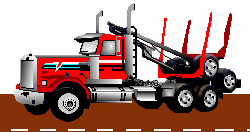Starting the Day
The catering truck driver starts his day by filling up with fuel and cleaning the outside of the truck, especially if the truck has the shiny aluminum-type body. He will then check his inventory of food and drinks to be sure he has everything he needs. If he is low on his inventory, he will go purchase any food and non-food items he needs to stock the truck for the day. If he sells pre-made sandwiches, he will have them made or purchase them already pre-made at this time.
Working
Most catering truck drivers have a route they follow. They will drive to the first stop on their route and set up for business. They will prepare any food that is not prepared already, set out condiments if they sell hot dogs and hamburgers and make sure there is plenty of each type of drink in the coolers. They will spend a set amount of time at this stop, then move on to the next stop on their route. They will continue these steps until they reach the end of their route.
Ending the Day
At the end of the route, the catering truck driver checks the inventory and makes a list of items that will need to be purchased in the morning. He cleans the inside of the truck, including the grill and other cooking equipment, if the truck is so equipped. If he did not get gas in the morning, he may get gas at this time. He will wipe down the outside of the truck again, making sure that nothing is stuck to the aluminum finish, making it easier to shine in the morning.
Conclusion
Some catering truck drivers stay in one location all day, but most will go from office to office throughout the lunch hours. Because there is only so much space in these trucks, they must do inventory daily. They generally do not have employees, so all administrative tasks are done at the end of the day and usually include only income and expense reports.



 Shop around carefully for car insurance. There are several websites available that you can use to compare rates such as esurance.com. You also need to evaluate whether you should have collision and comprehensive coverage on your older car. Keeping minimal liability coverage can drastically lower your premiums. Also, if your cash reserves are sufficient, raising your deductible will reduce the cost of your coverage as well. Finally, having more than one type of policy with the same
Shop around carefully for car insurance. There are several websites available that you can use to compare rates such as esurance.com. You also need to evaluate whether you should have collision and comprehensive coverage on your older car. Keeping minimal liability coverage can drastically lower your premiums. Also, if your cash reserves are sufficient, raising your deductible will reduce the cost of your coverage as well. Finally, having more than one type of policy with the same 









